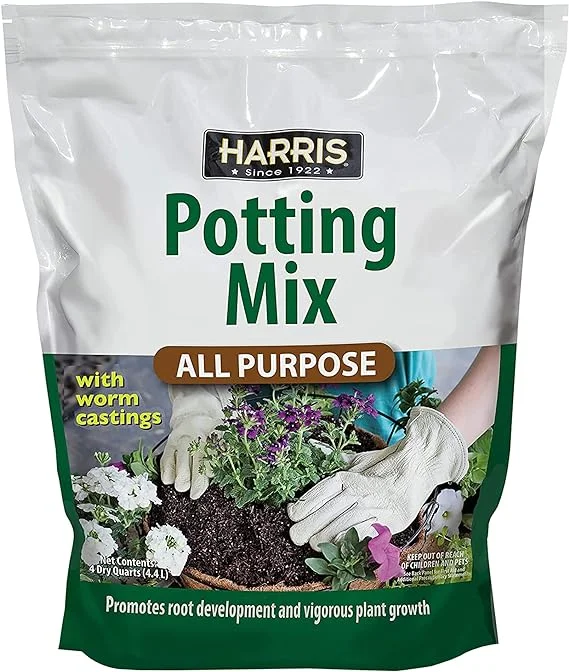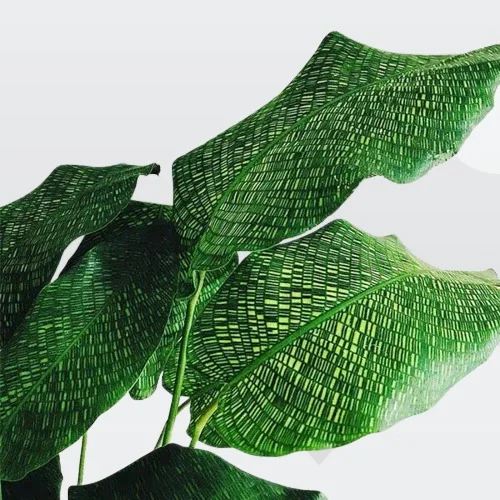12 Reasons for Calathea is Dying and How to Save It
Some links in this post may be affiliate links
Calathea is dying due to too little light, inconsistent watering, poor soil, improper feeding, low humidity, being pot-bound, pests and diseases among others.
Though Calathea are popular indoor plants, some Calathea varieties are fussy plants and are not easy to grow indoors. However, a few varieties easily adapt to indoor growing conditions and will thrive when given the right growing conditions.
Calathea flourish in medium to bright indirect light (dappled light), warm and humid conditions and moderately moist, fertile, well-drained soils coupled with monthly feeding in spring and summer. Learn how to grow and care for Calathea indoors.
If the correct growing conditions are missing, Calathea will develop some problems and may even die. Below are 12 reasons why a Calathea Plant may die and how to fix them.

12 Reasons Calathea Plant is Dying and Remedies
1. Too little light
Light is necessary for photosynthesis, the process of making food, needed for growth and energy for the plant. Therefore, too little light means that the plant cannot make enough food for growth and development which results in stunted growth and death of the plant.
How to fix itMove the plant to a brighter spot where it will receive bright indirect light or instal a full spectrum grow light if the natural lighting is not sufficient.
Rotate the pot regularly to ensure that the plant receives light on all sides for uniform growth and prevent unbalanced growth.
2. Poor quality soil
Poor quality soil does not drain easily and therefore it easily becomes compacted or soggy which can result in reduced growth and death of the Calathea Plant.
How to fix itThe best soil for Calathea should be loose, well-draining and rich in organic matter to provide the required nutrients. A blend of 2 parts potting soil and 1 part perlite or vermiculite (for proper drainage) is good for Calatheas.
3. Inconsistent watering
Inconsistent watering; either overwatering or underwatering will result in curled, spotted, yellow and drooping leaves and eventual death of the Calathea Plant.
Overwatering causes the roots to die due to lack of oxygen. When the roots die they cannot take up water and therefore the leaves begin to wilt, curl and eventually die.
Underwatering implies that there is too little moisture in the soil and therefore, the plant has no water to take up to the leaves. Thus, the leaves begin to droop, curl and eventually die if the situation is not corrected.
How to fix itCalathea require that the soil be kept moist while allowing the soil to dry out slightly between waterings in spring and summer.
Cut down on watering in fall and winter but do not allow the soil to dry out completely. Ensure that the pot has a drainage hole and the soil is well-draining to prevent waterlogging.

4. Improper feeding
Overfeeding a Calathea Plant will cause the roots to die due to fertilizer burn. This means they cannot take up nutrients and water required for photosynthesis, thus the plant begins to die.
Underfeeding implies that the plant is not getting enough nutrients needed for growth, therefore, the plant begins to die. Inadequate nutrients in the actively growing tips causes nutrients to be withdrawn from the older lower leaves which begin to yellow and drop.
How to fix itFeed your Calathea with a balanced, liquid fertilizer once monthly in spring and summer to boost a lush growth.
Do not feed in fall and winter as growth is minimal and feeding at this time can lead to fertilizer burn.
5. Low humidity
Calathea are very sensitive to low air humidity and will respond with brown leaf tips and edges, drooping leaves and stunted growth which can result in plant death. How to fix it
To increase humidity for Calathea, group the plants together, set the pot on a wet pebble tray or use a humidifier. You can also grow the plants in a terrarium or in a well-lit bathroom, kitchen and other humid areas in the home.
6. Being pot-bound
If your Calathea is pot-bound, the roots have filled the pot and there is very little soil to hold enough water when the plant is watered.
This implies that there is no water for the plant to take up to the leaves for photosynthesis, therefore, the plant cannot make adequate food for growth. Lack of enough food will cause wilting, drooping and eventual death of the plant.
How to fix itCheck the bottom of the pot for roots growing through the drainage hole and repot the plant into a pot one size larger or divide it into several sections to propagate new plants.
Thereafter, repot the Calathea Plant every 2 years at the beginning of the growing season (spring to early summer) when it becomes pot-bound. Use a pot one size larger than the current one. Check out these ceramic pots on Amazon.

7. Pest infestations
Calathea are prone to mealybugs, aphids, scale insects and spider mites which suck plant sap resulting in drooping, brown leaf tips and edges, stunted growth and eventual death of the plant.
How to fix itPest infestations on Calathea is prevalent in dry conditions. Therefore, set the pot on a wet pebble tray, use a humidifier or put the plant in a well-lit bathroom or kitchen to discourage the pests.
Keep the plant well groomed by removal of dead and yellow foliage to minimize pest infestations. Cut the leaves with a clean sharp knife or scissors at the base, where the leaf meets the stalk.
Isolate the affected plant to prevent spread to the other plants and treat it for the pests with an insecticidal soap or neem oil to get rid of the pests. Make sure to follow the manufacturers' recommendations.
8. Root-rot disease
Root-rot disease is characterized by yellowing and wilting of the leaves which is rapidly followed by browning and plant collapse. It is promoted by soggy soil.
How to fix itSlip the Calathea Plant out of its pot and inspect the roots. Brown-black mushy roots indicate root-rot, trim them off and treat the healthy roots with a copper-based fungicidal solution as indicated by the manufacturer.
Disinfect the pot with the fungicidal solution or use a fresh pot to repot the plant in fresh free-draining soil.
Do not water the plant and keep it dry for some time before resuming watering.
To prevent root-rot in the future, ensure that the pot has a drainage hole and the soil is well-draing to prevent it from getting soggy.
Take care not to overwater in fall and winter as growth is slowed at this time, therefore, the plant does not require much water.

9. Leaf spot disease
Leaf spot disease is indicated by brown patches surrounded by a yellow halo (brown, soft leaf spots). It is prevalent in warm, humid conditions coupled with poor air circulation.
How to fix itIsolate the affected plant to prevent spread to the rest of the plants and spray it with a systemic fungicide and ensure all the parts are completely covered with the fungicidal solution.
Maintain good air circulation and avoid wetting the foliage when watering or water from the bottom instead.
10. Drafts
Drafts from AC units, stove, hot air vents, windy doors, drafty windows and others will cause sudden changes in temperature which will lead to stunted growth and eventual death of the Calathea Plant.
How to fix itKeep your Calathea away from sources of drafts to maintain an average warmth with a minimum of 150C.
11. Salts buildup
Accumulation of salts in the soil originating from hard water or the fertilizers used will result in brown leaf tips, reduced growth and death of the plant.
How to fix itWater your Calathea with chemical-free water only like rain water or filtered water as they are very sensitive to chemicals dissolved in water.
Regularly, flush out accumulated salts from the soil by running a stream of water through the soil. Allow the stream of water to run for some time and repeat the process several times.
12. Direct sunlight
Exposing your Calathea Plant to direct sunlight will cause scorching, wilting, drooping and eventual death of the plant.
How to fix itPosition your Calathea in a more shaded spot or use a sheer curtain to shield it from direct sunshine.
You liked it? Share on social media.
Related Content
Amazon Associates Disclosure
Homeplantsguide.com is a participant in the Amazon Services LLC Associates Program, an affiliate advertising program designed to provide a means for sites to earn advertising fees by advertising and linking to amazon.com.




